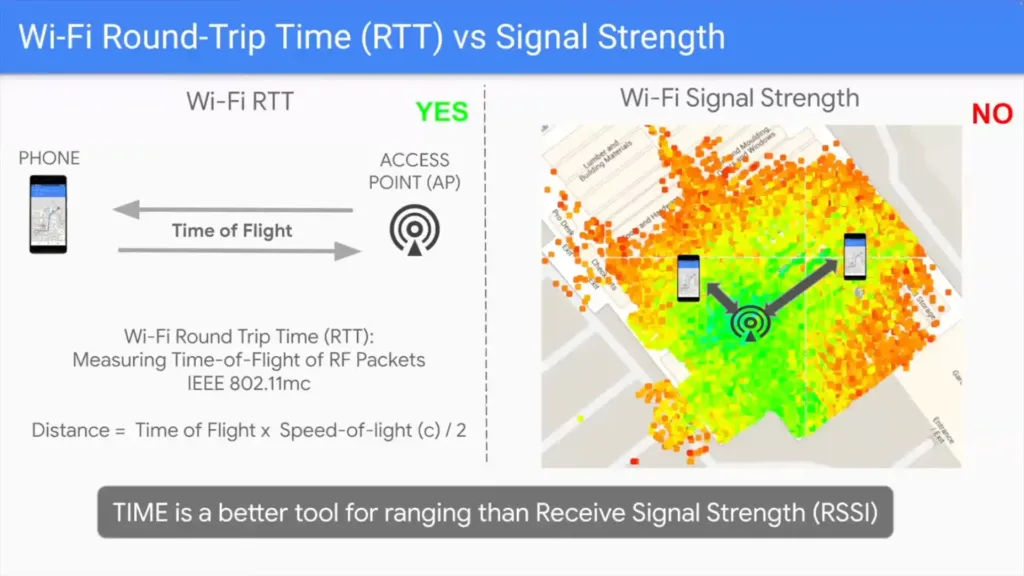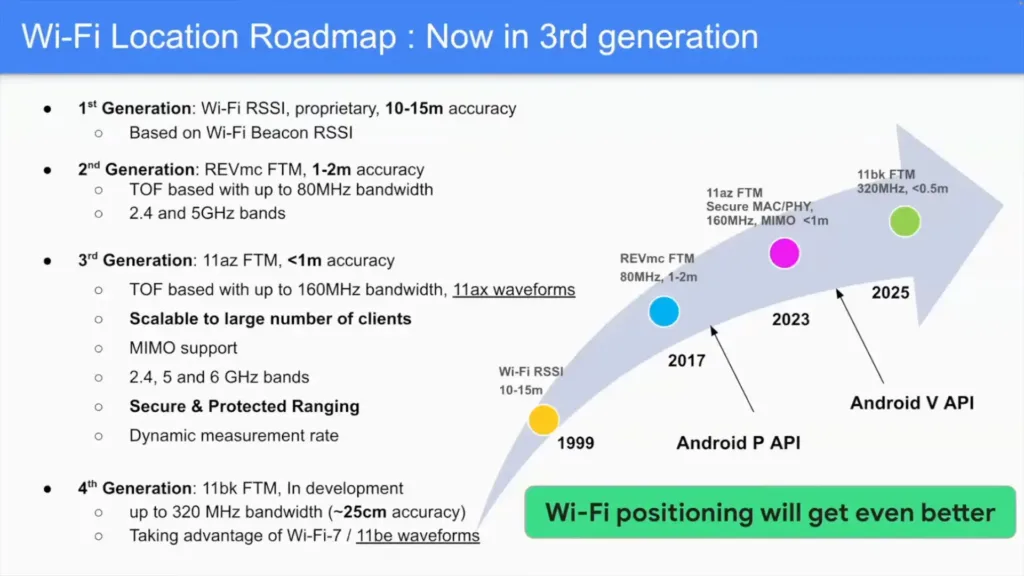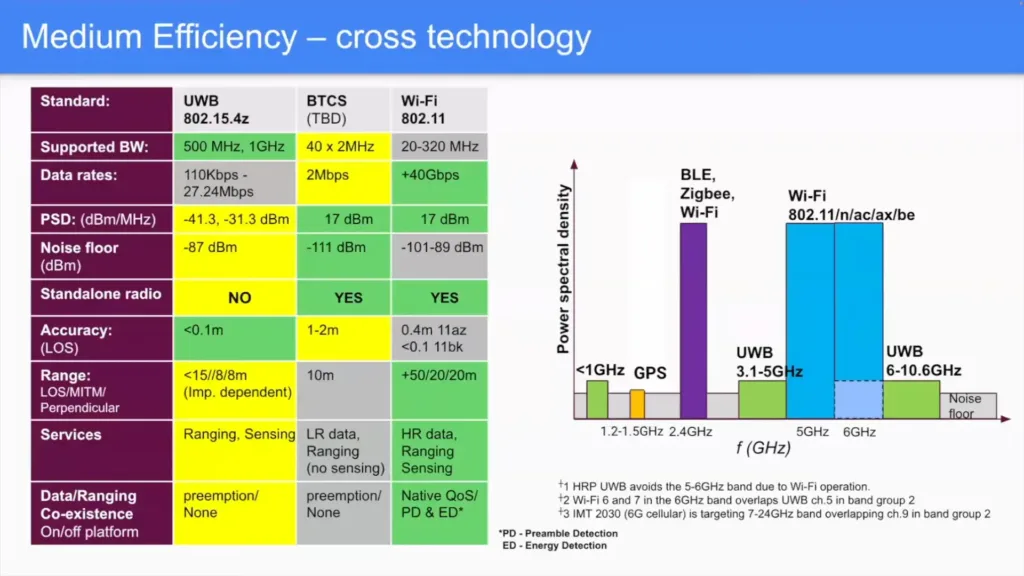- Indoor navigation will be possible thanks to Wi-Fi Ranging technology (IEEE 802.11az)
- This is new in Android 15
- Will have to wait for hardware and firmware support
Wi-Fi Ranging (IEEE 802.11az) is a technology that allows devices to determine position indoors with an accuracy of less than 1 meter. The use is wide ranging from navigating in tunnels to directing shoppers to the right store in shopping centers. And Android 15 brings support for this technology to mobile phones. Of course, it is necessary that the mobile phone is equipped with the appropriate chip.
Similar technology is already available in Android, specifically from version 9. It is the 802.11mc standard, or Wi-Fi Round Trip Time (RTT). This standard uses precision timing measurement (FTM) to enable position tracking with an accuracy of 1-2 m. Instead of relying on signal strength measurements, Wi-Fi RTT with FTM measures the “time of flight” (ToF) between an RF packet sent from your phone to multiple nearby access points. While Wi-Fi RTT with FTM has worked in both the standard 2.4 and 5 GHz bands, it has never been widely deployed in the field.
 Getting RSSI vs RTT position
Getting RSSI vs RTT positionAlready Wi-Fi RTT with FTM is quite accurate, IEEE SA managed to improve it even more. The already mentioned Wi-Fi Ranging with FTM makes it possible accuracy <1 m (up to 0.4 m). To do this, it uses twice the bandwidth (160 MHz vs. 80 MHz), supports the 6 GHz band, is scalable, more secure and protected, and supports dynamic measurement rates.

 Wi-Fi location history
Wi-Fi location historyWhy bother? Wi-Fi Rangewhen it exists UWB a Bluetooth 6.0 with Channel Sounding just around the corner? Wi-Fi-based positioning offers an excellent cost-performance ratio. It has plenty of available spectrum to meet growing demand, is compatible with previous generations of Wi-Fi, is scalable to a large number of clients, adapts to conditions, is robust to multipath via MIMO, is secure and cost-effective. Although Wi-Fi Ranging is slightly less accurate than UWB and Bluetooth Channel Sounding, it still has a better range.

 Wi-Fi Ranging vs UWB a Bluetooth Channel Sounding
Wi-Fi Ranging vs UWB a Bluetooth Channel SoundingThe Android positioning team at Google is already introducing several ways Wi-Fi Ranging can be used. For starters, it might enable it retail applicationwhich you they will help you find your way to the product in the store. It could also be used to control a smart home more conveniently. For example, if you ask the assistant to turn on the lights, the app can automatically determine which room you are in and determine which lights to turn on.
But for now, this is the music of the future. Most phones lack Wi-Fi Ranging support, and access points will also need a firmware update.
Are you interested in the option of indoor navigation?
Source: AndroidAuthority
Source: www.svetandroida.cz


